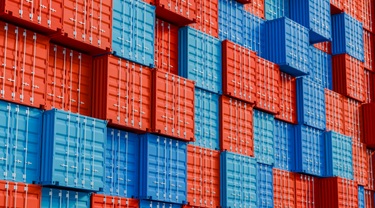Geographically vast, politically diverse and comprised of both emerging and developed economies, the Indo-Pacific region is a key area of interest for Canadian export development.
Although countries within the region pose challenges to mid-market companies due to geopolitical upheaval, varying degrees of centralized economic control and nascent ESG standards and frameworks, the Indo-Pacific is rich in possibilities.
Whether it’s the rapidly emerging middle class of consumers, the swift adoption of new tech or the region’s manufacturing muscle, Indo-Pacific countries offer prospects for private-public partnerships, as well as exports.
Olivia Lee, Export Development Canada’s (EDC) chief representative in Southeast Asia, says the region offers vast potential for Canadian companies, especially as we focus on three areas of growth in the infrastructure, agri-food and advanced manufacturing sectors.
“The infrastructure needs of Southeast Asia is growing and demand is there. If you’re looking to expand and to diversify your exports, this region is worth examining, but it’s a long-term game. Every country is very different from the next. It’s our intent to maximize the opportunities for Canadian companies there, which ties into the government’s overall strategy in Indo-Pacific,” says Lee, in an interview from EDC’s Singapore office.
As the region makes strides in a post-pandemic world, we explore three key countries: Vietnam, Thailand and the Philippines.
Vietnam
Vietnam is a country on the move. Once largely an agrarian and domestic consumer-based economy, Vietnam is set to grow by 4.3% in 2023, with expected growth next year of 5% and an increase to 6% in its five-year outlook. As it grows, so does its middle class. Every year, an estimated half a million people move up the income ladder.
For Canadian exporters, the opportunity to increase trade in value-added products aimed at a growing middle class is large and untapped, says Kevin Elliott, a country risk analyst at Export Development Canada (EDC).
“It’s one of the biggest arguments for Canadian exporters, that the Vietnamese consumer class is moving up and looking internationally for goods. Retail consumption in the past eight years has doubled, alongside demand for imported goods,” he says.
Currently, Canada’s $900 million in annual exports are focused on resource-level products, including agri-food such as grains, seafood and food oils, as well as fertilizer, fuels, and pulp and paper. Yet, as Vietnam continues its trajectory, the door is open to increasing Canadian trade in more complex export products such as agri-food crop rotation tech, sophisticated fertilizer innovations, retail consumer goods, banking and wealth management.
“One of the main things we’re seeing in Vietnam right now is their energy transition, in terms of scaling up wind and solar power development. There’s a lot going on there and the country is considered the next global hotspot,” says Lee.

Potential can also be found in digital products and services. Amongst countries embracing digitization and digital products, Vietnam is notably one of the fastest adopters, creating significant opportunities for Canadian companies. For example, although the bulk of Canadian digital services and products, like 5G, mobile finance and digital health solutions, are exported to the United States, Vietnam offers key opportunities for Canadian digital innovation.
Yet the Canada-Vietnam story, bolstered by the Comprehensive and Progressive Agreement for a Trans-Pacific Partnership (CPTPP), has several issues, including lagging post-pandemic trade. Of $13 billion in annual bilateral trade with Vietnam, only 7% represents Canadian exports. The remaining 93% are the imports of Vietnamese electronics, machinery and textiles to Canada. What’s more, overall Canadian post-pandemic trade with Vietnam has dropped by 18%, compared to Australia, which has rallied impressively to increase their trade by 130% in the same period.
Canadian exporters considering trade with Vietnam also face the challenge of a country under state-controlled, centralized economic management that can be difficult for foreign companies to penetrate. Even so, Vietnam is changing in that area, too.
“State-owned enterprises and conglomerates are a feature of the market, particularly in finance and infrastructure, so on-the-ground relationships are critical to success,” notes Elliott. “The good news is that the legacy of centralized economic management is giving way over time and Vietnam is allowing more foreign ownership, especially through public-private partnership.”
In fact, EDC’s article Doing business in Vietnam: What Canadians need to know, notes that the country’s Socio-Economic Development Strategy (2011-2020) acknowledged its need for structural reforms, environmental and economic stability, social equity and a focus on creating a positive environment for foreign companies.
Key growth areas for exporters include:
- Digital services and tech in 5G, mobile finance, digital health solutions, digital wealth management and credit solutions
- Retail exports for the growing middle class looking for more sophisticated international goods
- Value-added and complex agri-food and energy technology
- Although a coal consumer with a high-carbon footprint, Vietnam is increasingly looking to importers for green tech and low-carbon manufacturing solutions.
Key challenges
Vietnam is alive with opportunities for Canadian exporters, but there are challenges. In addition to patronage networks, infrastructure gaps and burdensome bureaucracy, Vietnam ranks high at 131 on the global corruption risk index and low in other transparency and rule of law indicators relative to regional peers.
- Short-term risk: Low
- Top Canadian exports (2023): Agri-food, seafood, food oils, grains, fertilizers, fuel and oil
- Canadian exports total value (2023): $900 million
- Total bilateral trade (2023): $13 billion
- International trade agreement with Canada: CPTPP came into effect for Vietnam in 2019; Regional Comprehensive Economic Partnership (RCEP)
- Vietnam’s gross domestic product (GDP): US$449 billion making it the 34th-largest global economy
Interested in growing your business in the Indo-Pacific?
Connect with EDC and watch your business flourish on the international stage.
Answer a few questions about your company to learn more about how EDC can help you plan, connect and fuel your expansion in the Indo-Pacific.
Thailand
Once a high-growth “tiger economy,” Thailand has emerged from its past as a nascent developed economy—with a caveat.
With growth stuck at around 3%, in part due to a pre-COVID-19 rut, the country is also struggling to recover from a major pandemic-related slump in exports, tourism and demand from its largest trading partner, China.
“This is the central problem. Integration into the global economy, dependence on China and the impact of COVID-19 set back the Thai economy, in terms of its remarkable success story of the last 30 years,” says Elliott.
“Right now, when we look at the medium term, it’s almost classified as a developed market, but they’ve plateaued in growth. Getting over the hump of 3% to 4% growth depends on politics, how diversified the economy is and if it takes advantage of emerging global trends,” he says.
Like other developed economies, Thailand has relied on subsidies and support for the domestic market to kickstart growth while remaining competitive internationally.
Despite its domestic issues, which include months-long delays in forming a government after a momentous 2023 national election, Thailand remains the world’s 27th-largest economy, according to the International Monetary Fund (IMF).
For Canadian exporters, tapping into what is also the fourth-largest export market in Association of Southeast Asian Nations (ASEAN) after Indonesia, Malaysia and Singapore bears investigating.
Year-over-year, Canadian exports to Thailand of fertilizer, pulp and paper, grain and cereals and machinery have grown to $1.2 billion, which represents a 39% growth since 2019. On the import side, Canada imports $5.2 billion of Thai goods, mostly in electronics, appliances, and machinery.
Trade in electronics and machinery also offers unique potential for Canadian exporters in those industries. While machine-learning tech and the semiconductor industries are dominated by China and the U.S., Thailand is positioned to fit into a growing global demand to diversify the supply chains in these sectors. According to Elliott, demand for alternative and affordable manufacturing in this space is a unique opportunity under which Canadian-Thai partnerships can flourish.
“Canadian exporters are coming in and partnering with Thai manufacturers, so there’s a lot of two-way trade with Thailand in this area that we could explore. Thailand will be an essential piece of the electronics supply chain for things like integrated circuits, electric vehicles or cellphones. Canada and Thailand could explore mutually beneficial partnerships on advanced manufacturing,” the veteran analyst says.

Key growth areas for exporters include:
- Electronics, advanced manufacturing, and semiconductors. Year-over-year, Thai imports to Canada in this sector have grown by 39%; Canadian exports to Thailand of electronics and machinery represent 20% of our exports.
- Export of Canadian fertilizer continues to perform strongly at 25% of our total export basket; pulp and paper (20%) and agri-foods such as grains and cereals (15%) represent the bulk of trade.
- Energy exports around cleantech are an area of increasing interest. Thailand’s energy imports of coal and natural gas run counter to global initiatives to reduce emissions, but there could be opportunities for the export of technology and services aimed at grid resiliency and clean energy sources.
- The agri-food sector, which is made up mostly of small businesses and family-owned companies, presents opportunities for Canada companies as the Thai government advances national policies to promote food security and farm mechanization.
Key challenges
Thailand’s ongoing political challenges following the national election and a five-year projection that shows slower growth than its neighbours do pose some issues for trade. However, Thailand sits at the very heart of Southeast Asia and ranks well for global competitiveness and ease of doing business, making it a solid target for Canadian export trade partnerships.
- Short-term risk: Medium
- Top Canadian exports (2023): Fertilizers, pulp and paper, grain and cereals, machinery and electronics
- Canadian exports total value (2023): $1.2 billion
- Total bilateral trade (2023): $6.4 billion
- International trade agreement with Canada: No
Thailand’s GDP: US$574 billion making it the 27th-largest global economy
Philippines
The Philippines holds a unique position in global business as a stable trading partner with deep ties to China, the U.S. and Europe. It has become a vibrant and dynamic market in Asia, and a top tier destination for international trade and investment. In the past 15 years, the Philippines economy has doubled in size and has shifted from being a principally agriculture-based economy to one now dominated by industry and manufacturing.
In concert with the country’s rich history, predictable operating environment and depth of experience with international business practices, the market is a key long-term bet for Canadian exporters looking to enter the region.
The economy is expected to grow by 5% in 2023 and 4% in 2024, before picking up speed and growing by 6% a year over the longer term. Central to unlocking this growth, however, will be continued investment across the archipelago.
For Canadian exporters, the Philippines’ ongoing need for infrastructure improvements across a range of industries could be the perfect prospect for mid-market Canadian exporters.
“Infrastructure is a key area of opportunity. Canada has deep experience in engineering, transit and construction and the Philippines are looking for partners to resolve the infrastructure gaps that have prevented it from moving to the next level,” says Elliott.
Key challenges
Of course, anything worthwhile is seldom without challenges, and the strong legacy that Filipino society puts on enduring familial and cultural ties is both a strength and a weakness. Powerful families tend to dominate local business activity through patronage networks and conglomerates that overlap business, policy and kinship—and can create roadblocks for Canadian exporters entering the market without local connections or established private-public partnerships.
Concentrated business practices are also emboldened by increasingly concentrated politics in the Philippines, and is another feature that Canadian companies ought to be aware. The political landscape has increasingly become one of fewer check and balances in recent years, with implications for transparency and political interference in business and society as a whole.
“When we think about key risks to Canadian business in the market, the persistent blurring of political, legal and commercial lines features at the top,” Elliott says. Still, market fundamentals make it “a stable place for Canadian trade,” he adds.

Key growth areas for exporters include:
- A full range of infrastructure projects, including bridges, roads, ports and transit, are needed to keep pace with growth.
- Although clean energy technology isn’t a main focus for the Philippines, cleantech in construction, green concrete and grid resiliency could represent areas of growth.
- The Trade Commissioner Service (TCS) has also identified several sectors of interest, including climate finance, telecommunications, cleantech, information and communications technology (ICT) and defence and security.
- Exports to the Philippines and its 7,000 islands have grown by 60% since pre-pandemic, focused on agri-food products, like beef, poultry and cereals, as well as pulp and paper and fertilizers.
Canadian-Philippine trade is vibrant and could benefit from ongoing negotiations for a free trade agreement (FTA) in the context of the Canada-ASEAN relationship. Although a deal hasn’t been signed yet, the two countries made positive moves with the inauguration of the Joint Economic Commission in early 2023.
- Short-term risk: Low
- Top Canadian exports (2023): Agri-foods, like beef, poultry, cereals, pulp and paper, fertilizers
- Canadian exports total value (2023): $1.2 billion
- Total bilateral trade (2023): $3.1 billion
- International trade agreement with Canada: No, but a free trade agreement in the context of the Canada-ASEAN FTA negotiation is being discussed.
- Philippines GDP: US$440 billion making it the 36th-largest global economy
Check out EDC’s Country Risk Quarterly, which highlights economic uncertainty and opportunity at the global and country level. It also identifies the issues that affect the country risk rating to help you make informed trade and investment decisions.
EDC provides many resources that exporters can use to monitor global risk. To explore these areas, please refer to our Knowledge Centre, solutions and Export Help Hub.







